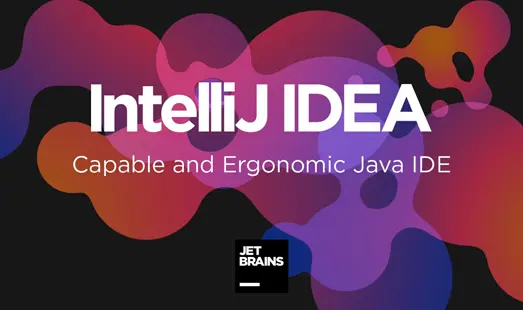CompletableFuture 简介
CompletableFuture 在 Java 里面被用于异步编程,异步通常意味着非阻塞,可以使得我们的任务单独运行在与主线程分离的其他线程中,并且通过回调可以在主线程中得到异步任务的执行状态,是否完成,和是否异常等信息。
CompletableFuture 实现了 Future、CompletionStage 接口
实现了 Future 接口就可以兼容现在有线程池框架,而 CompletionStage 接口才是异步编程的接口抽象,里面定义多种异步方法,通过这两者集合,从而打造出了强大的 CompletableFuture 类。
Future 与 CompletableFuture
Futrue 在 Java 里面,通常用来表示一个异步任务的引用,比如我们将任务提交到线程池里面,然后我们会得到一个 Futrue,在 Future 里面有 isDone 方法来判断任务是否处理结束,还有 get 方法可以一直阻塞直到任务结束然后获取结果,但整体来说这种方式,还是同步的,因为需要客户端不断阻塞等待或者不断轮询才能知道任务是否完成。
Future 的主要缺点如下:
(1)不支持手动完成
我提交了一个任务,但是执行太慢了,我通过其他路径已经获取到了任务结果,现在没法把这个任务结果通知到正在执行的线程,所以必须主动取消或者一直等待它执行完成
(2)不支持进一步的非阻塞调用
通过 Future 的 get 方法会一直阻塞到任务完成,但是想在获取任务之后执行额外的任务,因为 Future 不支持回调函数,所以无法实现这个功能
(3)不支持链式调用
对于 Future 的执行结果,我们想继续传到下一个 Future 处理使用,从而形成一个链式的 pipline 调用,这在 Future 中是没法实现的。
(4)不支持多个 Future 合并
比如我们有 10 个 Future 并行执行,我们想在所有的 Future 运行完毕之后,执行某些函数,是没法通过 Future 实现的。
(5)不支持异常处理
Future 的 API 没有任何的异常处理的 api,所以在异步运行时,如果出了问题是不好定位的。
CompletableFuture 入门
使用 CompletableFuture
场景:主线程里面创建一个 CompletableFuture,然后主线程调用future.get()方法获取子线程执行结果会阻塞,最后我们在一个子线程中使其终止。
用途:已经知道子线程的执行结果了,那么就不需要等待子线程执行完成了,直接结束它。
1
2
3
4
5
6
7
8
9
10
11
12
13
14
15
16
17
18
19
20
21
22
23
24
25
26
|
public static void main(String[] args) throws Exception {
CompletableFuture<String> future = new CompletableFuture<>();
new Thread(() -> {
try {
System.out.println(Thread.currentThread().getName() + "开始工作");
Thread.sleep(3000);
System.out.println("子线程工作结束,取消阻塞");
future.complete("success");
} catch (Exception e) {
e.printStackTrace();
}
}, "子线程").start();
System.out.println(Thread.currentThread().getName() + "线程阻塞");
System.out.println("主线程调用get方法获取结果为: " + future.get());
System.out.println("主线程完成,阻塞结束!!!!!!");
}
|
没有返回值的异步任务 runAsync
1
2
3
4
5
6
7
8
9
10
11
12
13
14
15
16
17
18
19
20
|
public static void main(String[] args) throws Exception {
System.out.println("主线程开始");
CompletableFuture<Void> future = CompletableFuture.runAsync(() -> {
try {
System.out.println("子线程启动干活");
Thread.sleep(3000);
System.out.println("子线程完成");
} catch (Exception e) {
e.printStackTrace();
}
});
System.out.println("主线程取得结果:"+future.get());
System.out.println("主线程结束");
}
|
有返回值的异步任务 supplyAsync
1
2
3
4
5
6
7
8
9
10
11
12
13
14
15
16
17
18
19
20
|
public static void main(String[] args) throws Exception {
System.out.println("主线程开始");
CompletableFuture<String> future = CompletableFuture.supplyAsync(() -> {
try {
System.out.println("子线程开始任务");
Thread.sleep(3000);
} catch (Exception e) {
e.printStackTrace();
}
return "子线程完成了!";
});
System.out.println("主线程取得结果:"+future.get());
System.out.println("主线程结束");
}
|
线程依赖 thenApply
当一个线程依赖另一个线程时,可以使用 thenApply() 方法来把这两个线程串行化。
1
2
3
4
5
6
7
8
9
10
11
12
13
14
15
16
17
18
19
20
21
22
23
24
25
26
27
| private static Integer num = 10;
public static void main(String[] args) throws Exception {
System.out.println("主线程开始");
CompletableFuture<Integer> future = CompletableFuture.supplyAsync(() -> {
try {
System.out.println(Thread.currentThread().getName() + "开始执行加10任务");
num += 10;
} catch (Exception e) {
e.printStackTrace();
}
return num;
}).thenApply(integer -> {
System.out.println(Thread.currentThread().getName() + "开始执行平方任务");
return num * num;
});
Integer integer = future.get();
System.out.println("主线程结束, 子线程的结果为:" + integer);
}
|
结果

还有一个相似的方法thenApplyAsync()
1
2
3
4
5
6
7
8
9
10
11
12
13
| CompletableFuture<Integer> future = CompletableFuture.supplyAsync(() -> {
try {
System.out.println(Thread.currentThread().getName() + "开始执行加10任务");
num += 10;
} catch (Exception e) {
e.printStackTrace();
}
return num;
}).thenApplyAsync(integer -> {
System.out.println(Thread.currentThread().getName() + "开始执行平方任务");
return num * num;
});
|
结果

两者的区别
- thenApplyAsync:使用同一个线程执行第一个以及后面依赖的所有的任务;
- thenApply:由调用的程序去执行任务;
消费处理结果 thenAccept
thenAccept 消费处理结果,接收任务的处理结果,并消费处理,无返回结果。
1
2
3
4
5
6
7
8
9
10
11
12
13
14
15
| private static Integer num = 10;
public static void main(String[] args) {
System.out.println("主线程开始");
CompletableFuture.supplyAsync(() -> {
try {
System.out.println("加10任务开始");
num += 10;
} catch (Exception e) {
e.printStackTrace();
}
return num;
}).thenApply(integer -> num * num)
.thenAccept(integer -> System.out.println("子线程全部处理完成,最后调用了accept,结果为:" + integer));
}
|
thenRun()方法
thenRun: 一般也用于回调函数最后的执行,但这个方法不接受回调函数的返回值,纯粹就代表执行任务的最后一个步骤
1
2
3
4
5
6
7
8
9
10
11
12
13
14
| private static Integer num = 10;
public static void main(String[] args) {
System.out.println("主线程开始");
CompletableFuture.supplyAsync(() -> {
try {
System.out.println("加10任务开始");
num += 10;
} catch (Exception e) {
e.printStackTrace();
}
return num;
}).thenApply(integer -> num * num).thenRun(() -> System.out.println("任务的最后一个步骤"));
}
|
异常处理 exceptionally
exceptionally 异常处理,出现异常时触发
1
2
3
4
5
6
7
8
9
10
11
12
13
14
15
16
| private static Integer num = 10;
public static void main(String[] args) throws Exception {
System.out.println("主线程开始");
CompletableFuture<Integer> future = CompletableFuture.supplyAsync(() -> {
int i = 1 / 0;
System.out.println("加10任务开始");
num += 10;
return num;
}).exceptionally(ex -> {
System.out.println(ex.getMessage());
return -1;
});
System.out.println(future.get());
}
|
handle 类似于thenAccept/thenRun方法,是最后一步的处理调用,但是同时可以处理异常
1
2
3
4
5
6
7
8
9
10
11
12
13
14
15
16
17
18
19
20
21
| private static Integer num = 10;
public static void main(String[] args) throws Exception{
System.out.println("主线程开始");
CompletableFuture<Integer> future = CompletableFuture.supplyAsync(() -> {
System.out.println("加10任务开始");
num += 10;
return num;
}).handle((i,ex) ->{
System.out.println("进入handle方法");
if(ex != null){
System.out.println("发生了异常,内容为:" + ex.getMessage());
return -1;
}else{
System.out.println("正常完成,内容为: " + i);
return i;
}
});
System.out.println(future.get());
}
|
结果合并 thenCompose
thenCompose 合并两个有依赖关系的 CompletableFutures 的执行结果
1
2
3
4
5
6
7
8
9
10
11
12
13
14
15
16
17
| private static Integer num = 10;
public static void main(String[] args) throws Exception{
System.out.println("主线程开始");
CompletableFuture<Integer> future = CompletableFuture.supplyAsync(() -> {
System.out.println("加10任务开始");
num += 10;
return num;
});
CompletableFuture<Integer> future1 = future.thenCompose(i ->
CompletableFuture.supplyAsync(() -> i + 1));
System.out.println(future.get());
System.out.println(future1.get());
}
|
结果合并 thenCombine
两个没有依赖关系的 CompletableFutures 任务
1
2
3
4
5
6
7
8
9
10
11
12
13
14
15
16
17
18
19
20
21
22
23
24
25
26
27
28
29
| private static Integer num = 10;
public static void main(String[] args) throws Exception {
System.out.println("主线程开始");
CompletableFuture<Integer> job1 = CompletableFuture.supplyAsync(() -> {
System.out.println("加10任务开始");
num += 10;
return num;
});
CompletableFuture<Integer> job2 = CompletableFuture.supplyAsync(() -> {
System.out.println("乘10任务开始");
num = num * 10;
return num;
});
CompletableFuture<Object> future = job1.thenCombine(job2, new BiFunction<Integer, Integer, List<Integer>>() {
@Override
public List<Integer> apply(Integer a, Integer b) {
List<Integer> list = new ArrayList<>();
list.add(a);
list.add(b);
return list;
}
});
System.out.println("合并结果为:" + future.get());
}
|
同步多个任务
allOf:一系列独立的 future 任务,等其所有的任务执行完后做一些事情
1
2
3
4
5
6
7
8
9
10
11
12
13
14
15
16
17
18
19
20
21
22
23
24
25
26
27
28
29
30
31
32
33
34
35
36
37
38
39
| private static Integer num = 10;
public static void main(String[] args) throws Exception{
System.out.println("主线程开始");
List<CompletableFuture> list = new ArrayList<>();
CompletableFuture<Integer> job1 = CompletableFuture.supplyAsync(() -> {
System.out.println("加10任务开始");
num += 10;
return num;
});
list.add(job1);
CompletableFuture<Integer> job2 = CompletableFuture.supplyAsync(() -> {
System.out.println("乘以10任务开始");
num = num * 10;
return num;
});
list.add(job2);
CompletableFuture<Integer> job3 = CompletableFuture.supplyAsync(() -> {
System.out.println("减以10任务开始");
num = num * 10;
return num;
});
list.add(job3);
CompletableFuture<Integer> job4 = CompletableFuture.supplyAsync(() -> {
System.out.println("除以10任务开始");
num = num * 10;
return num;
});
list.add(job4);
List<Integer> collect = list.stream().map(CompletableFuture<Integer>::join).collect(Collectors.toList());
System.out.println(collect);
}
|
执行结果

anyOf: 只要在多个 future 里面有一个返回,整个任务就可以结束,而不需要等到每一个 future 结束
1
2
3
4
5
6
7
8
9
10
11
12
13
14
15
16
17
18
19
20
21
22
23
24
25
26
27
28
29
30
31
32
33
34
35
36
37
38
39
40
41
42
43
44
45
46
47
48
49
50
51
52
53
54
55
56
57
58
59
60
| private static Integer num = 10;
public static void main(String[] args) throws Exception{
System.out.println("主线程开始");
CompletableFuture<Integer>[] futures = new CompletableFuture[4];
CompletableFuture<Integer> job1 = CompletableFuture.supplyAsync(() -> {
try{
Thread.sleep(5000);
System.out.println("加10任务开始");
num += 10;
return num;
}catch (Exception e){
return 0;
}
});
futures[0] = job1;
CompletableFuture<Integer> job2 = CompletableFuture.supplyAsync(() -> {
try{
Thread.sleep(2000);
System.out.println("乘以10任务开始");
num = num * 10;
return num;
}catch (Exception e){
return 1;
}
});
futures[1] = job2;
CompletableFuture<Integer> job3 = CompletableFuture.supplyAsync(() -> {
try{
Thread.sleep(3000);
System.out.println("减以10任务开始");
num = num * 10;
return num;
}catch (Exception e){
return 2;
}
});
futures[2] = job3;
CompletableFuture<Integer> job4 = CompletableFuture.supplyAsync(() -> {
try{
Thread.sleep(4000);
System.out.println("除以10任务开始");
num = num * 10;
return num;
}catch (Exception e){
return 3;
}
});
futures[3] = job4;
CompletableFuture<Object> future = CompletableFuture.anyOf(futures);
System.out.println(future.get());
}
|
执行结果













